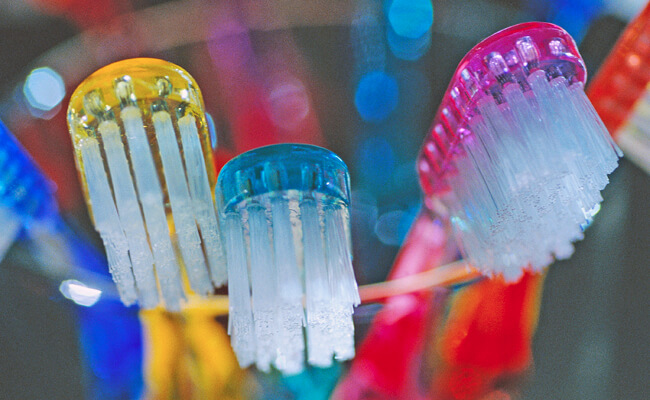
Sounds pretty logical. When you have strep or a garden-variety sore throat, after you’re feeling better you should toss your toothbrush and buy a new one. A fresh tool will have no germs. It came from a sterile environment. So you won’t re-infect yourself.
In a word: Horsefeathers. And the Pediatric Academic Society has released a carefully researched study that sets the record straight. That’s why we at ENT Center of Austin say don’t believe everything we read on the Internet unless there’s actually scientific evidence.
Pretty good rule of thumb, in the information age, for anything you come across on the web. Act like a good journalist would — a really good investigator. Don’t rely on sources unless they have a air-tight basis in fact.
What The Study Found
It all started in Texas, Galveston to be exact. That’s where brainiacs at the University of Texas Medical Branch (UTMB) took on this mother’s tale. Their mission: To determine if you needed to discard your toothbrush after a bout with a sore throat.
Basically, there are a couple of reasons to throw away the instrument. Has your kid used it to scrub-down your dog’s choppers or it’s been overused and the bristles are all crummy? Put in the garbage. There are other reasons. Use common sense. Make-up your own.
Pulled Directly From the Abstract
We went straight to the source to get the real McCoy. It comes from the American Academy of Pediatrics. While this is written at more than a 4th-grade reading level, you’ll ultimately get to the bottom line:
- BACKGROUND: Practitioners in our area tell children diagnosed with streptococcal pharyngitis to discard their toothbrushes, so we sought to determine if this advice is warranted. The literature for group A Streptococcus (GAS) growth on toothbrushes is limited, targeting children with recurrent infections. Some literature suggests that GAS can live on toothbrushes for an extended period of time, dependent on oral habits, 3 days on a rinsed toothbrush and up to 15 days on a non-rinsed toothbrush.
- OBJECTIVE: Our study looks at the prevalence of GAS on toothbrushes of both the ill and well children in our clinics.
- DESIGN/METHODS: Children ages two years to twenty years are asked to brush their teeth for one minute in the clinic with a new toothbrush without toothpaste. Parents are given a small survey about oral habits, including the frequency of brushing, rinsing, and type of toothpaste used, the date of the last GAS infection including any current symptoms, and the date of the last antibiotic administration. The toothbrush is placed in a sterile cover and transported to the lab for inoculation in broth, then swabbed onto selective blood agar plates to assess 1+, 2+ and 3+ growth.
- RESULTS: Preliminary studies proved that group A Streptococcus could be isolated from toothbrushes handled in this manner. Surprisingly, we found that most “new” toothbrushes are not sterile and will grow different types of bacilli and Staphylococcus. Thus far, toothbrushes have been collected from 27 well children and 16 children with documented GAS infection. GAS has been isolated from one well patient and from no patient with current GAS disease.
- CONCLUSIONS: These data do not support the practice of discarding toothbrushes from GAS infected children. This preliminary study will need further investigation with a larger amount of subjects and used toothbrushes collected from the home.
And there you have it right from the horse’s mouth. Incidentally, another reason to purchase a new toothbrush is if anyone around the ranch has used the instrument to clean-up a stallion’s mouth.
Original Source: http://austinentmd.com
Image Source: ameritasinsight.com/wp-content/uploads/2012/02/toothbrushes.jpg

